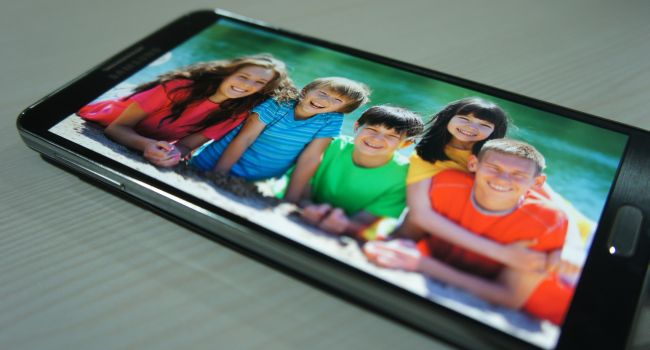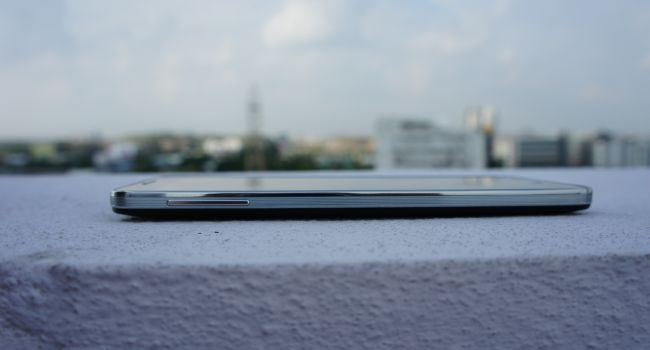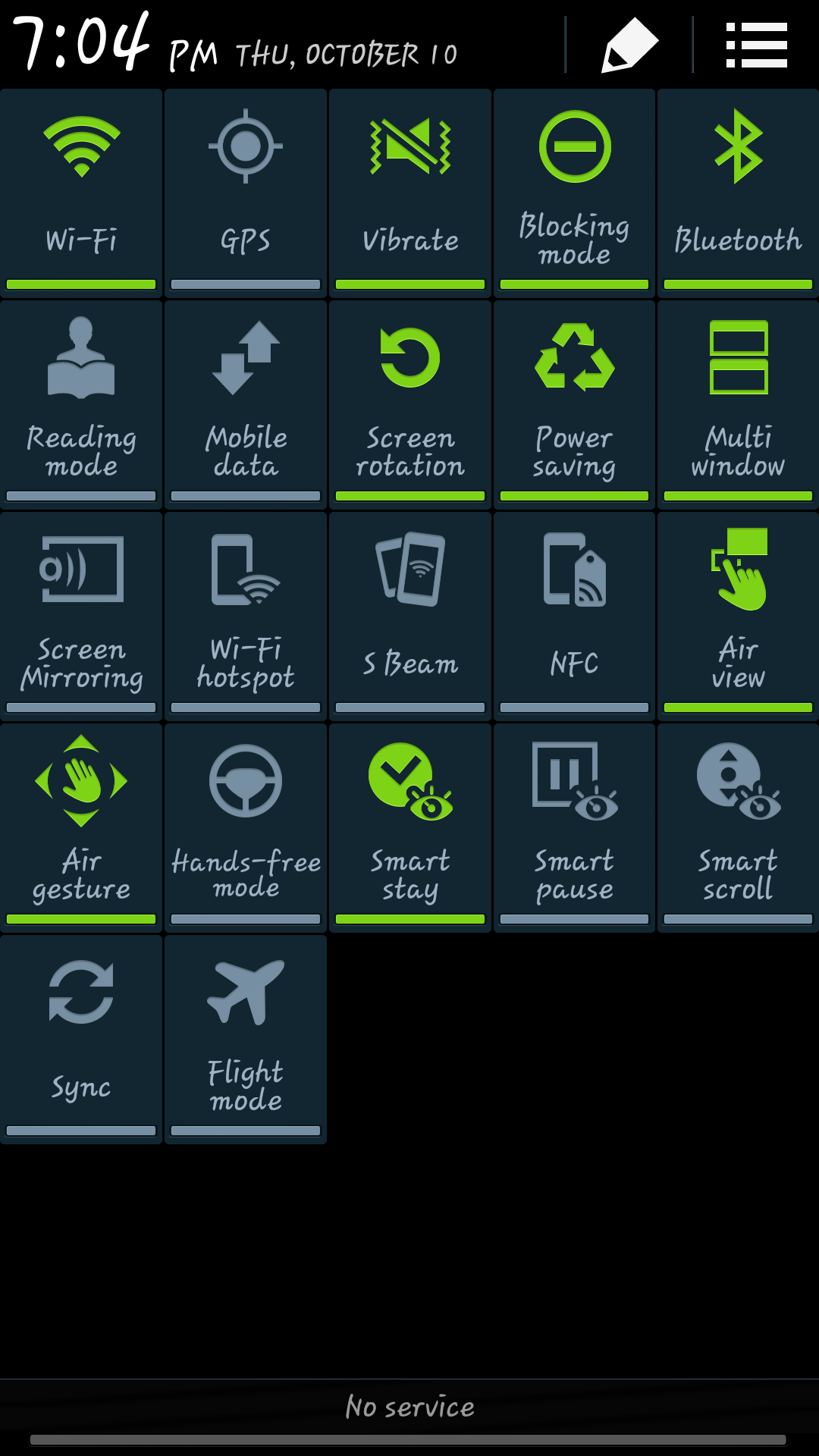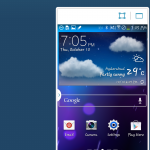A new AI model built for the global majority Microsoft has announced Project Gecko, a research initiative designed to close the performance gap between…
Samsung Galaxy Note 3 review: great specs, bland design


The Samsung Galaxy Note 3 is the flagship phablet device from Samsung that many were waiting for. It competes with every other flagship smartphone from the iPhone 5S to the HTC One, HTC One Max, Sony Xperia Z Ultra, Sony Xperia Z1 and the likes. Priced at around INR 45 000 in India (R7 200, US$730), it is the second most expensive smartphone after the Apple iPhone 5S. This device comes with incremental improvements to every aspect of a smartphone when compared to the Galaxy Note 2 except where they were laughed about; design and UI.
Display
Most, if not every, flagship smartphone released in 2013 comes with a full HD display although the Apple iPhone 5S is an exception. The Galaxy Note 3 is equipped with an improved version of full HD Super AMOLED screen that has “Diamond Sub-Pixel Arrangement” which improves sharpness and colour balance as per Samsung.

In reality, it is one of the nicest displays that I’ve gazed upon. It has an almost perfect viewing angles and the colours do not fade, no matter at what angle you’re looking at the screen. The gap between the surface of the screen and the actual pixels is so minimal that you feel as if all the content icons and text is painted over the surface of the Gorilla Glass that is protecting it. The graininess that we used to notice in earlier AMOLED screens (due to pentile matrix sub-pixel arrangement pattern) is now non-existent. Although it performs impeccably indoors, the performance outdoors is outmatched by the LCD screens on devices such as Sony Xperia Z Ultra and HTC One.
Overall, it is a display that is second to none and that’s some real praise, considering the amount of competition that is being experienced in terms of screen performance. As per Dr. Raymond, President of DisplayMate, the Samsung Galaxy Note 3 has one of the brightest mobile displays.
Hardware and performance
The Galaxy Note 3 comes in two variants; a LTE version with a Qualcomm Snapdragon 800 SoC and the global HSPA+ version with Samsung Exynos Octa 5420 SoC. Both of them come with 3GB DDR3 RAM and options for various internal storage capacities (16/32/64 GB). The one I reviewed was equipped with the Samsung Exynos Octa 5420 SoC, 2GB RAM and 16GB internal storage, which could be expanded further using the in-built MicroSD card slot.
The Exynos Octa 5420 is a slightly improved version of the Exynos 5410 which was used in the Galaxy S4. Out of the 8 CPU cores, 4 CPU cores are based on ARM Cortex A15 architecture while the remaining 4 CPU cores are based on ARM Cortex A7 architecture. This whole idea of using two different CPU architectures on one chip is based on the idea of ARM’s big.LITTLE design. It uses the low powered CPU cores when the device is performing low CPU intensive tasks like calling, music playback and sleep/stand-by mode. The high performance cores are used when using tasks like gaming, web-browsing, shooting videos or screen mirroring.
The original idea behind big.LITTLE was that the device should be able to use any permutation and combination of available CPU cores as per the needs. But the current scenario only lets us use either high performance or low performance, not both at the same time. ARM has fixed this issue and Samsung says that they will push a software update to the Note 3 that will enable full functionality of the big.LITTLE based SoC very soon (but it won’t be available for Galaxy S4 devices, which is sad). The said update should be able to provide extra oomph or better battery endurance, as needed.
The actual performance imitates the synthetic benchmarks as well. Using the Note 3 might not make you feel it any faster than the Note 2 but when you use both the devices side-by-side, you can actually notice a good amount of performance difference, be it UI transitions/animations or the pace at which apps/games can be opened, closed or switched.
There is also the capacitive stylus that comes with the Note 3, dubbed the S-Pen. It is a pretty useful tool if you like jotting, drawing and such stuff. There is a great software support for the S-Pen in the Note 3 but we will talk about it in the software section. As per the hardware point of view, the S-Pen comes with pressure sensitivity and an extra button that opens a special menu with various quick actions related to S-Pen on the screen. The S-Pen works well and is very accurate. The screen is built with some special hardware that can detect the S-Pen 2-3 cm away from the screen’s surface.

Design and build quality
As opposed to clearly cheap-feeling plastic, that was used in previous generation Samsung smartphones, the Note 3 comes with premium feeling pseudo-leathery material at the back, complete with stitched thread effect. The sides have aluminum finished plastic material. Although you may feel a bit betrayed by Samsung for giving you fake leather even when you have invested a huge amount from your savings, it at least feels better than previous versions.

One thing that I found commendable about the design of the Samsung Galaxy Note 3 is that Samsung managed to fit a larger 5.7″ screen in a body that is very marginally larger than the devices from competing brands such as Sony and HTC. Also, there is a removable back cover, so you can replace the battery with an extra one if you are short on power. As per the utility point of view, the Galaxy Note 3 is right there with the best of them.
Camera performance
The Galaxy Note 3 comes with a 13MP camera, just like the Galaxy S4, complete with autofocus lens, LED flash and geo-tagging. Even though the rumours suggested that it will come with an OIS unit, it didn’t. The camera can shoot full HD videos at 30 FPS. There are a whole lot of shooting modes, some of them are useful and some of them are just fancy things that you’ll rarely use. But at least, the features are present if you want to use them. Some of the most interesting features are panorama, rich tone (HDR), dual-shot, dual video recording and drama shot.

The panorama and HDR modes produce some of the best images that I have seen as of late. There is 360 degree panorama as well as the usual one. Both produce shots (as large as 60 MP) that are stitched perfectly with very minimal ghosting. The HDR helps keep the white balance uniform across all the areas of the image.

S-pen

Side Top

Back Niii

Display Niii

Front Lead Niii

Side Left

Side Right

Samsung Galaxy Note 3 Multi Window

Improved multi-tasking works well on this enormous display.
Samsung Galaxy Note 3 One Hand Mode

One-hand mode while gimmicky, works to a certain degree.
Samsung Galaxy Note 3 Proprietary Apps

All the apps you need. S-Health is still a favourite.
Samsung Galaxy Note 3 Quick Setting Toggles

So many shortcuts...
Samsung Galaxy Note 3 S-pen Menu

S-Pen shortcut menu works flawlessly.
Samsung Galaxy Note 3 Walk Mate

As we said, we love S-Health and its multitude of uses.
Samsung Galaxy Note 3 Hdr

Samsung Galaxy Note 3 Indoor

Samsung Galaxy Note 3 Outdoor 1

Samsung Galaxy Note 3 Outdoor 2

Samsung Galaxy Note 3 Panorama

The dual-shot mode is certainly very useful if you are with your friends or family. The front and rear camera take the image at the same time. The image from the front camera is overlapped onto the image taken from the rear camera. The “Sound and Shot” mode clicks an image along with the surrounding voice but I think that the video recording is a better solution than using this mode.

Coming to the most important bit, the image quality. The images in daylight come out really good, with lots of details but there is a bit of over-sharpening happening in the image post-processing. The lack of OIS results in less impressive images in the low-light situations. Devices like HTC One, LG G2 and Lumia 1020 offer much better image quality under low-light situations (which are most probably when you go out with your friends or family to a restaurant or a pub). The video recording has no major flaws but in 2013, the device needs to provide something really valuable to be able to triumph over other smartphones. It doesn’t.
Operating system and UI
The Android version 4.3 JellyBean is pre-loaded on the Note 3 along with TouchWiz Nature UX. TouchWiz UI is much more than just a skin. It comes with a lot of eye-candy, various add-on features, some of them are really useful while others are just half-baked gimmicks.
There are a lot of options to customise the home screen, lock screen and the notifications centre. The quick glance displays the time, battery level and notifications by detecting (using the proximity sensor) that you are reaching the device. There are a lot of widgets and quick setting toggles that a user can enable or disable, but it sure looks over-stuffed at times. Number of home screen panes can be added or deleted as preferred.
Some really useful features are multi-window, mini apps and S-Notes. Mini apps can come in real handy as they can float upon any screen or app that you are using. The multi-window feature lets the user run two apps at once, bringing true multitasking capability. S-Notes and Scrapbook are the apps which lets the user note down information, jot notes and do some creative stuff like drawing using the S-Pen and it works really well. Scrapbook allows the user to collect various screenshots (full or partial). S-Voice is just a Siri-like version of Google Now and works as expected, but not as good as Siri though, in terms of interaction.
Other features like Air Gesture, Air View, Smart Scroll and Smart Pause are not practically useful in real-life situations and you won’t get used to them, or say, you won’t feel the need to use those features.
Connectivity and battery life
Connectivity includes HSPA+, Dual-Band Wi-Fi ac/a/b/g/n, Wi-Fi Direct, Bluetooth v4.0 + LE and Micro USB v3.0 for data transfer. There is GLONASS A-GPS for location detection and navigation. Features like DLNA, AllShare Access and MHL are present if you want to enjoy the content from your smartphone displayed on a bigger screen like an LED television or any other compatible device. It all works quick and as expected.
With a humongous 3300 mAh Li-Ion battery, the Note 3 has a marathon long life per charge. It can last for more than 15 hours of talk-time, around 8-9 hours of web browsing and over 12 hours of continuous video playback. In fairly normal usage, the Note 3 can last up to 2-3 days on a single full charge.
Verdict:
Samsung flagship devices perform really well in the areas which matter a lot, such as screen, camera, performance and battery life. But they are not the industry leaders when it comes to the devices’ feel and user interaction. Samsung really needs to improve the design of their devices by making it feel premium, an area where Apple, Sony and HTC shine. Also, the user interface is filled with so many features, you might not use some of them even once. With a really long battery life, Galaxy Note 3 is really one of the best, or say, utilitarian smartphones in the market.
The Samsung Galaxy Note 3 price is around INR 45 000 (R7200, US$720) in various retail and online stores in India, which I feel is a bit overpriced. Devices like Sony Xperia Z1 priced around INR 38,000 (R6200, US$620 unlocked) and LG G2 priced at INR 36,000 (R5900, $590 unlocked) offer better cameras, premium feel and elegant UI. Overall, there’s nothing really wrong with the Samsung Galaxy Note 3 but Samsung is over-charging the price tag on the back of features that are not really needed or practical to use.
Score: 8/10



















